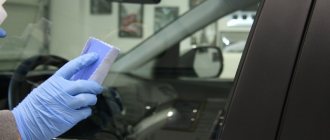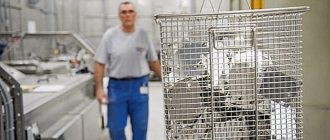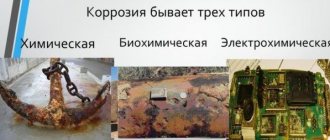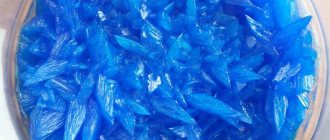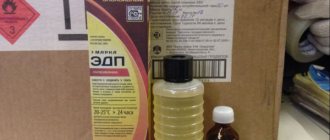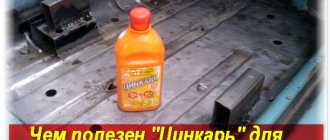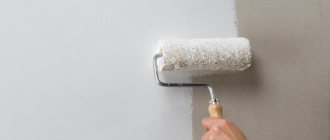Any type of repair is preceded by preliminary preparation.
The degreaser is used when further processing is necessary: metal before painting (for example, a car); enamel before polishing; components before gluing.
This process is often approached with disdain, using formulations that were outdated many years ago. You must understand that, for example, glue when connecting parts will not provide the necessary adhesion if the surfaces are not treated in advance.
Is it possible to degrease with solvent? If you are striving for quality, then the answer is not worth it. In this article we will look at the main problems that arise if the final preparation of products for gluing, painting and polishing is not carried out.
White Spirit
The most common degreaser is white spirit.
It is a transparent liquid with the smell of fuels and lubricants. It was distributed under the trade name "Nefras-S4" of various modifications. It has gained wide popularity due to its versatility.
Please note: working with white spirit without following safety precautions poses a health hazard. Flammable!
Easily neutralizes any oils and fats, many organic compounds. In addition to these purposes, it is used as a thinner for oil paint, enamel, and varnish. Another remarkable quality of white spirit is that after treating the surface, you can immediately apply primer or paint to it. The evaporation of this solvent occurs instantly, as they say “before our eyes.”
It is important to know: you must work in a ventilated area, wearing eye, respiratory and skin protection.
Degreasing during and after washing
The process of degreasing a car's paintwork will also be useful when washing the body. Moreover, it can be performed both during the washing process and after it. Thus, anti-silicone or a universal degreaser is often used in cases where car shampoo, for some reason, is not able to cope with the contaminants present on the body. This usually happens when the shampoo is not of very good quality, and difficult to wash off dirt has stuck to the paintwork. In this case, many car enthusiasts in garage conditions wash off heavy dirt with the help of anti-silicone. However, before this, it is recommended to remove easily washed off dirt using the above means.
Antisilicones are recommended for removing bitumen stains , difficult-to-remove dirt, poplar marks on the hood of a car, and so on.
The cleaning/degreasing procedure is simple. To do this, use an anti-silicone degreaser purchased in advance, which, if necessary, must be diluted in the proportions specified in the instructions or used in finished form. Typically, a hand-held spray bottle is used for application. In accordance with the instructions for most products, you need to give the product some time (5...15 minutes) so that it can dissolve the dirt. It is necessary to remove dirt from the surface of the body paint with soft rags - polypropylene napkins, fiber, soft rags that do not leave greasy streaks and pieces of fabric on the already treated surface.
After degreasing and cleaning is completed, it is recommended to apply some kind of protective agent to the paintwork - wax, polish. It will not only protect the paintwork in the future, but will also give the surface a beautiful, “rich” look. Moreover, after treating with a degreaser, the machine body does not need to be washed, since its surface remains perfectly dry. Accordingly, in this state you need to apply wax.
If, instead of factory-made degreasers, you use improvised means (we will discuss them later), for example, white spirit, then it is advisable to wash the car, since they leave a greasy film on the paintwork, which goes away over time. This is allowed when washing, but it is not necessary to do this before painting/polishing.
Instead of a liquid degreaser, you can use special impregnated wipes, like NANOSKIN Autoscrub system - the so-called auto scrub. However, such products are unlikely to be suitable for ordinary car owners, since they are quite expensive and are designed for long-term use. Accordingly, this is more likely an option for professional car washes.
Solvent 646
The next popular degreaser will be solvent 646, which is often used in preparation for painting. The liquid is slightly yellowish in color with a sharp, specific odor.
The spectrum of its action is quite extensive. Excellently dilutes paints, degreases metal surfaces well, is indispensable for removing old layers of paint, and is used for washing painting equipment and tools.
It is recommended to use for thinning the following enamels:
- nitrocellulose NC;
- glypthal GF;
- melaninoamide MPs;
- acrylic;
- epoxy.
When working, it is necessary to maintain the temperature within +5…+30ᵒ C, and air humidity should not exceed 85%. In this case, the painted surface takes on a shiny, glossy appearance without spots or streaks.
Please note: solvent 646 is a fire and explosion hazard! When working, be sure to use respiratory, eye and skin protection! Work only in a ventilated area or with exhaust ventilation.
Why is degreasing necessary?
Degreasing is a mandatory process when preparing car body parts for painting. Its tasks include the following processes:
- Removing silicone, wax and bitumen stains from the surface being treated. anti-silicone degreasers are used for this . These products are the most common degreasers.
- Removing salt deposits. For this, a hydroalcoholic degreaser is used. Such products are more aggressive and can be used at any stage of preparing the surface of a part for polishing and/or painting. They are also used for washing equipment with water-soluble materials (at stations involved in painting work).
- Cleaning the surface immediately before painting. The products are also used to work with the water base.
It’s worth paying special attention to plastic parts, since other means are used for them. In particular, plastic degreasers not only remove fat, silicone, salts and other harmful elements from its surface, but also give the plastic antistatic properties, so that dust does not subsequently stick to it and grease clings less.
Acetone
Acetone, as a degreaser, is also widely used.
Colorless transparent liquid with a sharp specific odor. Excellently dissolves oil and grease stains, various resins. Used to thin primers, paints, enamel and varnish. Included in some solvents. It is made on an alcohol basis. Has high volatility.
Expert tip: When working with acetone, use a white rag to avoid causing color streaks on degreased surfaces.
When working with acetone, it is imperative to take measures to protect the skin, eyes and respiratory organs. It is strictly prohibited to use open fire or be near operating electrical appliances. For ease of working with acetone, it is best to use a spray bottle.
Important to know: acetone is flammable!
3Composition
The composition of this solvent is simple, consisting of only a few elements, the main of which is hydrocarbon, which makes up 56% of the solvent structure. Its remaining components are presented in smaller quantities:
- naphthenes;
- elements called paraffins (because of them the liquid is so flammable);
- hydrocarbons whose structure has a cyclic form.
Depending on the amount of the above elements, this petroleum solvent can have 3 composition options: A, B and C.
Vershina universal degreaser
The Vershina universal degreaser has confidently begun to gain popularity among drivers.
It degreases well any surfaces made of metal, ceramics, glass and plastic. Easily removes various contaminants from the surface before painting or applying any anti-corrosion coatings. Recommended by the manufacturer for treating surfaces before gluing them. It is very convenient to use with a spray nozzle on the bottle. When dry, it leaves no traces.
Compliance with safety precautions when working with degreaser guarantees complete safety.
This is interesting! Alkyd enamel: what is it and how is it different from alkyd paint
Degreasing before painting
Remember that the degreasing process must be performed at each stage of paintwork on a car body part - before applying putty, before applying primer and immediately before painting. Moreover, at each stage this must be done carefully and in compliance with technology. Otherwise, there is a high probability of swelling on the paintwork, so-called “volcanoes”, peeling of the primer and even paint (depending on which layer the degreaser was poorly applied), and wrinkling of the paintwork.
Solvent
Can also be used as a degreaser.
In the retail chain it may go under the name "Nefras F-130/150". Transparent colorless or slightly yellowish liquid. It is made on the basis of petroleum fractions. Less often - coal. When painting a car, it can be used not only as a degreaser, but also as a paint thinner. Excellently removes all auto-preservatives. At the same time, rubber bitumen and oil shale automotive mastics are diluted with a solvent. Solvent-based paints have unique properties. Thanks to their high adhesion, they create a durable coating. When working with solvent, it is necessary to strictly observe safety precautions.
Please note: solvent is toxic and flammable!
How to degrease metal before painting
In domestic conditions, owners, as a rule, use proven “old-fashioned” products - gasoline, kerosene, acetone, alcohol.
But today more modern and technologically advanced formulations are available. Among them, Nefras (White Spirit), Solvent 646 are quite popular. They have a lot of advantages - affordable price, increased level of environmental friendliness, the ability to form films that are more resistant to paintwork, which helps prevent the development of corrosion processes.
The problem for many owners is that the substrate after degreasing does not match the chosen paint. This can be avoided by purchasing a solvent suitable for the coating being treated. But more often than not, such problems do not arise when using solvent No. 646 . Consumer reviews talk about its versatility, so there is no need to carry out additional operations.
Another popular type of solvent is Antisilicone. These compounds are in high demand among craftsmen, who use them to degrease the car body before subsequent painting. However, safety rules must be observed during operation. In the room where degreasing work is carried out, windows and doors must be opened. Such solvents can be used as far as possible from sources of ignition and always wearing personal protective equipment.
The most effective are special concentrated solutions - Chistomet, Docker Dekamet and others. The main active component in these products is alkali. They also contain additional substances - inhibitors, surfactants, additives, etc. Before use, the concentrate is mixed with water in pre-calculated proportions. It all depends on the degree of contamination of the surface being treated. The advantages of these solutions are their high environmental friendliness and safety. They can be used not only to degrease the surface, but also to increase the anti-corrosion resistance of the metal. Can be used in industrial enterprises.
Traditional degreasers
Often, when servicing a car, the most common degreasers are used.
For the initial treatment of small areas of contamination, you can successfully use gasoline, kerosene and even diesel fuel. Primary treatment consists of preparing the surface of the iron for degreasing. For example, the manufacturer recommends using BR-2 solvent, also known as Galosh gasoline, for washing metal products.
This recommendation can be successfully applied to kerosene and diesel fuel (“diesel fuel”). By the way, gasoline or kerosene can be used to thoroughly clean and degrease leather and fabric products. The only drawback is that the smell will take a long time to dissipate.
This is interesting! What is drying oil: types, composition, technical characteristics and application features
Degreasing before gluing
If the car owner decides to apply some kind of decorative molding or protective film to the car’s paintwork, then the paintwork must similarly be degreased first. The reasons for this are the same. That is, on the treated surface there will be no fats, various bitumen and mud stains, metal salts and other chemical compounds, which in the future will significantly deteriorate the quality of gluing.
As for the drugs used in this case, you need to be careful in your choice. In particular, do not use aggressive agents that can damage the paintwork. It is best to use factory-made anti-silicones after reading their instructions for use. Another option is to use non-aggressive alcohol-based products. You can also use products to remove bitumen stains, poplar marks on the hood and similar compounds.
Leather, wood, rubber
Such materials have a special composition - organic origin. This means that all kinds of pollutants accumulate on them. Dirt is deeply absorbed and difficult to remove. Chemicals such as acetone alone are unlikely to completely remove the contaminant.
You can clean wood efficiently in an easy way: simply remove the top layer of the part. Of course, if it is permissible.
Are used:
- Plane.
- Sandpaper.
Layers of wood are removed to the depth to which impregnation occurred. Oil stains should disappear completely.
YOU NEED TO UNDERSTAND! If a large layer of contaminated surface is removed from a wooden part, it will no longer require degreasing. Such surfaces will be reliably glued with a suitable composition.
Painted plastic bases
Let's say the plastic is painted, but these parts need to be glued together. It is not recommended to degrease such a coating, since the adhesive may affect the top layer of the material. That is, it is not the parts that will stick together, but the paint. Therefore, it is advisable to first sand the surface, exposing the base material and making it rougher. You can also use other methods of connecting plastic elements.
How to apply glue to paint?
There may be an urgent need for gluing painted parts (any material). Then the surfaces to be painted are lightly sanded with abrasive paper to make them rough. In this state they stick together better. Next they will need to be degreased.
IMPORTANT! Choice of composition. Aggressive agents are not suitable in this case, as they dissolve the paint itself. A suitable solution is an alcohol-containing liquid.
